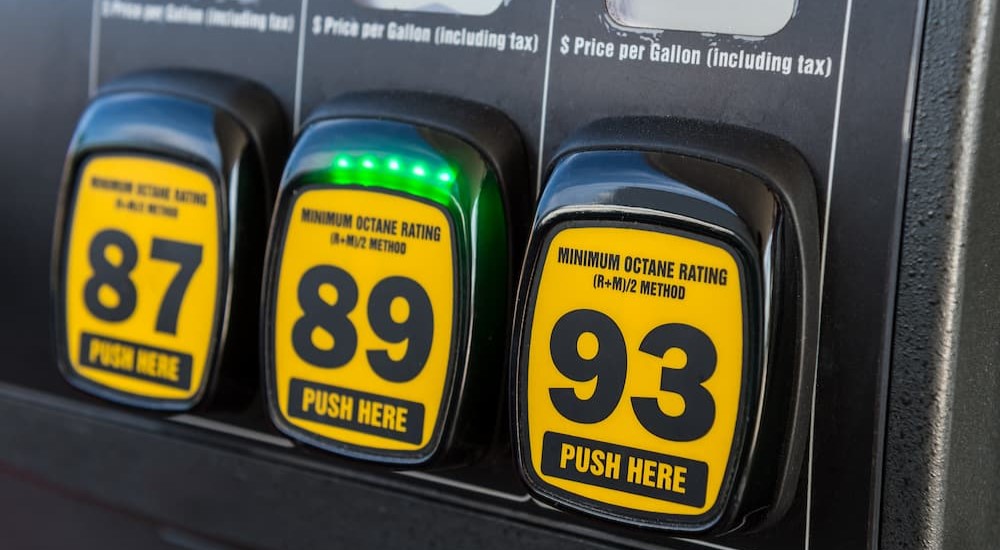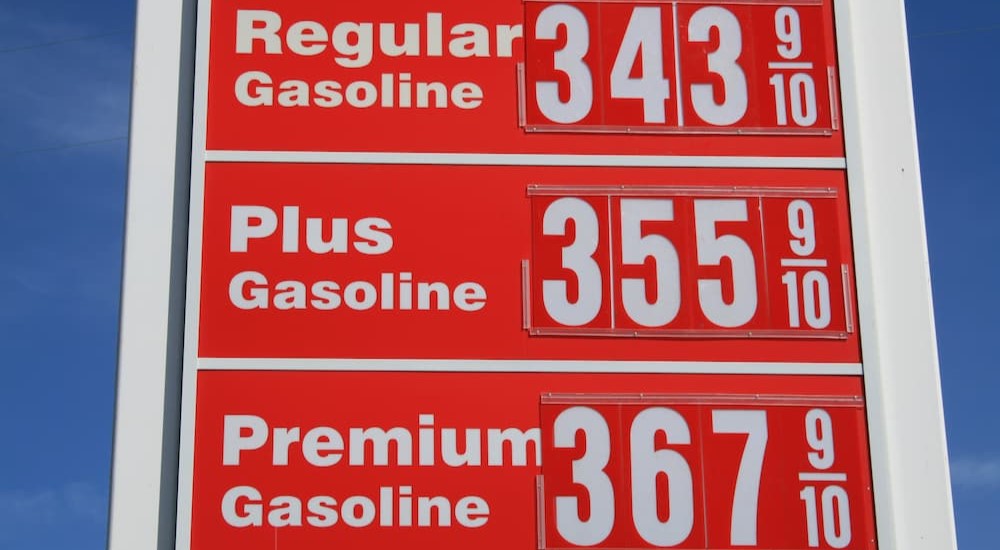Even someone who’s never driven a car has probably heard the phrase “high-octane,” as it’s become synonymous with something exciting or heart-racing. But why is that, exactly? High-octane gas, in and of itself, isn’t particularly exciting, but it’s come to represent what it’s used for, which are high-performance engines, typically those found in muscle cars or sports cars, which deliver a heart-pounding driving experience. So, why do these engines need high-octane fuel, and are you using the right kind of gas in your vehicle? Those are great questions, and the answers are relatively simple, so let’s dig into them and find out!

What is an Octane Rating?
The octane rating for fuel directly relates to how much that fuel—the gas you get for your vehicle, in this case—can be compressed before it will ignite. A higher rating means it can withstand greater compression, while a lower rating means that it can’t handle as much compression before it will ignite. It’s very important to point out that I’m not talking about general combustion or flammability; this refers to spontaneous ignition without an external source. So a low-octane fuel that is overly compressed will ignite without a spark or any other ignition source, creating combustion.
There are two different types of tests conducted to determine the octane rating for fuel using particular standardized methods. These two tests each generate a score, with a higher number meaning it can withstand greater compression. The two scores are then averaged together, and the average of the two is the number you’re shown at the gas pump—this is what (R+M)/2 on the gas button or pump refers to, the two test scores averaged. In general, this will be 87, 89, and 93, though it’s worth pointing out that 89 and 90 are considered mid-grade, while high-grade can fall anywhere from 91-94.
Why Does Octane Matter in Gas?
To appreciate the importance of octane rating for gas, it’s necessary to understand exactly how an engine works at its most basic level. I’ll do my best to keep things simple (for both our sakes). The most fundamental part of your vehicle’s engine is its cylinders, each of which has a piston located within it—the pistons are all connected to a crankshaft. There are also two valves in each cylinder: an intake valve and an exhaust port.
Internal-combustion engines use a four-stroke cycle for generating power, these happen at incredibly high speeds, but essentially they are:
- The air intake opens as the piston moves down in a cylinder; air and fuel enter the cylinder at this time.
- The piston moves up, compressing the mixture of air and fuel (gasoline).
- A spark plug in the cylinder creates a spark, igniting this mixture of air and fuel; the resulting explosion pushes the cylinder down, which turns the connected crankshaft, sending power out to other parts of the vehicle;
- The piston moves back up, pushing exhaust out through the exhaust port, back to step one.
Steps two and three in this four-stroke cycle are what we’re most interested in when understanding octane in gas. The engine in your vehicle is designed to compress that air and fuel mixture to a precise degree, creating as much potential energy as possible without going beyond the compression limit that your gas can handle. Then the spark sets things off, generating power and making your vehicle function. If the octane level of your fuel is wrong for your vehicle, then combustion can occur independent of the spark (which is timed to make things work perfectly), and that impacts your vehicle’s performance and reduces fuel efficiency.
The Consequences of Putting Improper Gas in Your Engine
If everything’s working properly in your vehicle, combustion occurs precisely based on how your engine is designed, engineered, and manufactured to produce optimal power for your vehicle. This is called controlled combustion because it occurs when expected under the control of the engineered system. When combustion occurs at any other time within your vehicle, then it’s called spontaneous combustion, and that’s a problem, though it can happen at two different times.
It’s possible that spontaneous combustion can occur alongside the intended or controlled combustion or immediately afterward during the power-stroke (step 3 above) of your engine. This throws off the timing of your vehicle and can potentially cause damage to your engine; in older vehicles, this was referred to as “knock” since the piston in the cylinder was being knocked by a secondary explosion and made everything feel off. Modern vehicles are designed to detect this through sensors—remember that most parts of your vehicle are computerized these days—so you’ll probably never feel or hear the knock. That being said, your vehicle accommodates for this by delaying the spark to help offset the risk of spontaneous combustion, which in turn makes your engine less efficient.
The other possible way that spontaneous combustion can occur is called “pre-ignition,” meaning that combustion is happening before it’s supposed to. In other words, during step two, as the piston moves up and compresses the gas, it reaches a point where combustion occurs before the spark ever happens. Again, modern vehicles can detect when this is happening and adjust the timing of valves and fuel injection to help prevent it, but this reduces your engine’s fuel efficiency and overall performance.

How to Choose the Right Octane
In both of the instances we just looked at, what happened was that the fuel in the vehicle wasn’t at the right octane level for the engine. This typically happens because of a high-performance engine designed and made to use high-octane gas (93, for example), but someone put low-octane fuel (say 87) in it instead. So the engine is compressing that gas to incredible levels since it should be able to handle it, but with the lower octane fuel in there, it’s being over-compressed and igniting—either through knock or pre-ignition.
The key, then, is to know what kind of fuel your engine should use and stick to that, though what’s most important is not to go lower than it should use. If your engine is designed for 87 octane gas and you put 89 or 93 octane gas in it, there won’t be any negative consequences. You’re just wasting some money since high-octane fuel is more expensive. On the other hand, if you have a vehicle that should use 93 octane gas and you fill up with 87, then your fuel efficiency will take a dive, plus your emissions will be much higher than they should be as your engine adjusts for your mistake.
Am I Using the Right Gas in My Vehicle?
Well, that depends on what your vehicle’s engine calls for and what you’re putting in it, but based on what we’ve looked at today: you can put higher-octane gas into your vehicle than it should have, and you’re fine. But don’t put low-octane gas into a vehicle with an engine designed to take higher octane fuel. Take a look at your vehicle’s owner’s manual to find the octane that the manufacturer wants you to use, then stick to it. Just remember that aftermarket changes like a turbocharger can impact the gas you should use, so keep that in mind before heading to the gas pump. If you spent the money on a sports car or something else with a high-performance engine, then you should treat it right and give it the fuel that it deserves.

